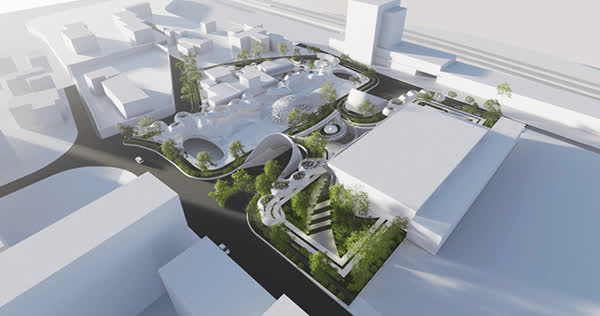AECO is a well-known acronym that stands for Architecture, Engineering, Construction, and Operations; in which data plays an essential role. This industry includes separate players (i.e., architects, engineers, contractors, and operators) who come together in order to work on a project from start to end.
They work efficiently together to achieve a common goal. There are several trends that can explain the rise of data gathering and use in AECO.

What are the five trends that are leading to the rise of data in the AECO world?
The following list includes five of the most common trends that can help increase the use of data in the architecture, engineering, construction, and operations world:
Trend #1: Instrumentation
When thinking about the rise of data in the AECO industry, the main factor that can clearly explain it is the increase of sensors. Sensors can be defined as advanced devices which can detect or measure physical property and record, indicates, or respond to it. Hence, they are nowadays added to everything in the ACEO industry.
This trend, as described by some experts, allows data to have an impact on modern architectural designs. It is the instrumentation of human power and ability, and of building actuators and sensors.
Trend #2: Datatization
Datatization simply means transformation. The verb of it is digitizing. It refers to the process of turning any piece of information into digital formats. In other words, utilizing data analytics can lead us to convert any part of an architectural project, whether it was a sound, picture, etc., into digital forms that then will be processed by a computer. These digital forms include data that can be readable, shareable, comparable, and distinguished.

Trend #3: Productization
Productization in architecture is the process of turning architectural design ideas into reality. It includes research, brainstorming, communication, planning, modeling, designing the concept, etc. As a result, this process can be referred to as the outcome of data analysis.
Trend #4: Validation
Validation, as explained in the Cambridge Dictionary, is the process of making any act official or legally acceptable, in other words, approved. In architecture, there are several ways to validate architectural designs; one of them is using data to legitimize decisions. With technology, advanced tools are used to validate quick decisions with either a yes or a no as an answer to certain questions that the device provides to help you set the rules.
Trend #5: Visualization
Visualization is the process of turning data and information into visual images. This trend helps architects communicate complex information and insights a lot easier, especially with nonprofessionals to make architectural data more understandable to them. Therefore, visualization creates a powerful tool to tell stories behind every architectural design or project as it allows a graphical manner.
Conclusion
Once again, AECO is a frequently used abbreviation that stands for architecture, engineering, construction, and operations. Data plays an extremely important role in every industry of the AECO.
It allows architects, engineers, contractors, and operators to come together and use their unique skills, abilities, wide knowledge, and experience in order to work on a certain building project, starting from the stage in which they design the concept to the stage in which they finish the project. In other words, the AECO team members work together efficiently in order to achieve a clear common goal they set in the beginning.
There are several trends that can explain the rise of data gathering and use in AECO. In conclusion, data is an essential part of the AECO industry. In architecture, in particular, data has several benefits.
Some of these benefits are managing complicity, defining the architectural project, and as we explained above, leading to behavior change. To the architects themselves; however, the benefits of data include providing a clear view of architectural designs, enhancing certainty and increasing confidence, encouraging team members to communicate and helping them learn quicker, and leading to make wise decisions and design insights.
You may like: Five Factors Leading to Change in Architecture
You can also follow more articles on ArchUp